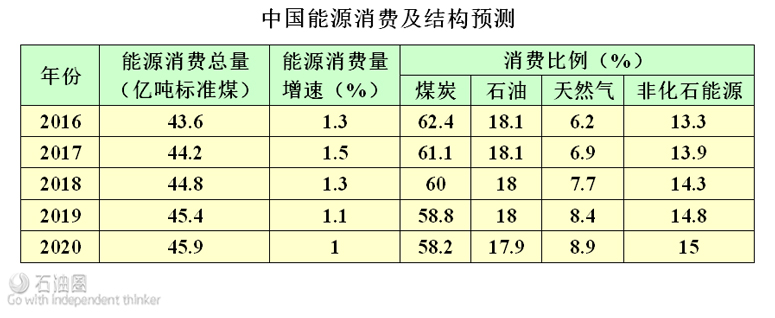A new era in talent shortages for energy
The oil and gas industry features prominently in President Trump’s plans to create energy independence and create jobs. But likely complex labor challenges ahead may not be easy.
When President Trump signed an executive order supporting the construction of the Keystone XL Pipeline, just days after his inauguration, it signaled the beginning of a new era for US oil and gas companies. After an often contentious relationship with the previous administration, the industry now is hoping to benefit from streamlined regulations, increased access and favorable policies designed to bolster energy production and job creation.
Indeed, job creation was one of the key issues of the 2016 election and a cornerstone of President Trump’s victory. His approach to job creation is underpinned by unlocking the domestic energy industry and allowing the resulting increase in production — especially from our abundant shale resources — to spur new investment and drive economic growth. For industry insiders, who have managed constant belt-tightening through the recent downturn, the administration’s pro-development philosophy is very good news indeed.
Yet there are a number of critical labor challenges that could hinder the industry’s ability to rebound. Some of these issues relate directly to other policies that the administration has said it plans to pursue; others to the industry’s existing talent limitations. Toghther, they present both a significant barrier to future growth — and an opportunity for human resources professionals to develop and drive a talent strategy that creates a strategic advantage for their organizations.
Is offshoring dead?
In a free market, companies will put jobs where they can be done most cost-effectively. For many majors, that means offshoring back-office tasks and relying on shared services in low-cost countries. This shift of supporting jobs to overseas locations makes sense for companies that are essentially global in nature, but in today’s political climate — where US jobs have become a priority — it has become a hot-button issue.
President Trump has repeatedly called on US companies to keep jobs at home, and he has threatened to institute a 35% tariff or “border tax” on goods sold here by companies that offshore jobs. The president has a number of levers that could be used to impact companies that move jobs overseas, as well as ways to benefit companies that bring jobs back to the US. For example, several members of Congress have expressed an interest in creating tax credits for companies that “onshore” jobs, or return them to the US.
It is important to note that these are not detailed policy proposals, so there is no firm view on how such a tariff would be implemented, whether it would cover companies that already offshore or how oil and gas companies would be impacted. But it is clear the administration is eager to stop offshoring and entice companies to keep — or bring — jobs back to the US.
That means that in the near future, oil and gas companies might be faced with a difficult decision: do we bring offshored jobs back to the US or pay a stiff penalty for not doing so? That decision would require a complex calculation to determine the actual salary, health care, retirement and real estate costs related to having a larger US employee presence versus the penalty or tariff for sending or maintaining work overseas.
An offshoring tariff could also motivate oil and gas companies to increase their use of contingent labor for non-technical positions – especially the back-office jobs that are that are typically the ones offshored and the easiest to fill with contract employees. While this would create jobs here in the US, they would not necessarily be the type of permanent, full-time jobs that provide a steady, long-term income with benefits.
Another unforeseen consequence: an offshoring tariff would likely drive a more rapid adoption of automation — what we call “digital labor” — to handle repetitive, transactional tasks in functions such as accounting and finance, tax, humanresources, supply chain management and more. This would allow companies to avoid the issue of offshoring altogether, but would not add US jobs, either.
Where are the workers?
The Trump administration’s plan to create economic growth also includes an infrastructure investment program that would offer federal tax credits to private investors willing to back road or highway construction and other public works. Many in Congress would like to add to that program with federal dollars so that projects that weren’t necessarily attractive to the private sector could still receive funding.
But one of the major challenges facing this level of infrastructure investment, especially when considering the expected growth in the oil and gas, petrochemical and manufacturing industries, is the shortage of skilled craft laborers such as welders, electricians and more.
Today, even at a lower level of activity, energy companies find it difficult to hire sufficient numbers of craft laboresers for the difficult, demanding tasks that oil and gas requires. The shortage in these fields is due to a number of issues — up-and-down cycles that have hurt the industry’s image with potential employees; increased visibility of other opportunities thanks to the internet; the push to encourage all young people to go to college; the popularity of technology –related fields; and the decreased willingness, especially among young men (who traditionally pursue such jobs), to accept careers that require hard, physical labor.
Any expansion of infrastructure investment in the US will likely require a significant ramp-up of skilled technical workers. And while the oil and gas industry has been working to develop partnerships with trade schools and community colleges, especially in key areas such as Louisiana and Texas, that is a fairly recent development in attracting candidates for these programs is exacerbated by the fact that vocational tech has been decimated at the high-school level, a victim of changing philosophies that places college readiness above training young people for blue-collar jobs.
Complicating this challenge is the fact that skilled labor jobs typically have a short life span, due to their physical nature. Older workers often transition to a different role, which means that the turnover in craft labor is greater than other fields.
Because of these issues, there is still a serious need for training at the high-school and community-college level, and the energy industry should be leading the charge to support these types of classes and programs.
At the same time, the industry needs to expand its outreach dfforts to influence different audiences and attract potential candidates. These efforts should include:
Ongoing communication about the importance of craft labor and the potential benefits of working in the energy industry. Oil and gas companies have a great deal to offer to young people with technical aptitude who don’t want a “desk job” and who enjoy building/repairing items or working with their hands. In addition, many young people don’t recognize the value that oil and gas brings to society; companies must do a better job of explaining the role that energy plays in modern living.
Outreach in new geographic areas and to new demographics. The industry needs to expand its recruiting focus and drive interest among young people who have traditionally been overlooked because of their location or background.
Targeting activities aimed at other sectors and industries. For example, outreach efforts focused on young people who are stuck in low-paying retailing jobs might be one way to attract candidates who otherwise were unaware of the opportunities available to them in oil and gas.
Creative approaches to share positive messages. The industry’s insulated culture hinders its ability to spread the word about career opportunities beyond individuals who are already connected with oil and gas in some way. This has changed somewhat in recent years, especially as it relates to STEM careers, but there is still a great deal that can be done to increase awareness about skilled/technical labor careers in the industry.
Leveraging tactics that work for other industries. The health care industry, for example, has long been successful in attracting new talent, even for non-professional, technical positions that require specialized training. Oil and gas companies can learn a great deal from the outreach and recruiting efforts of other industries.


 石油圈
石油圈

